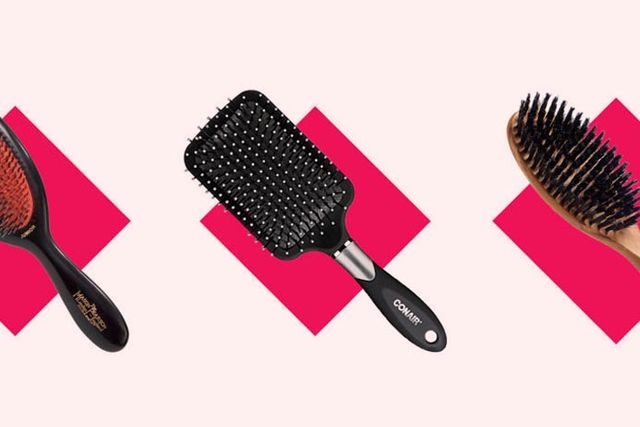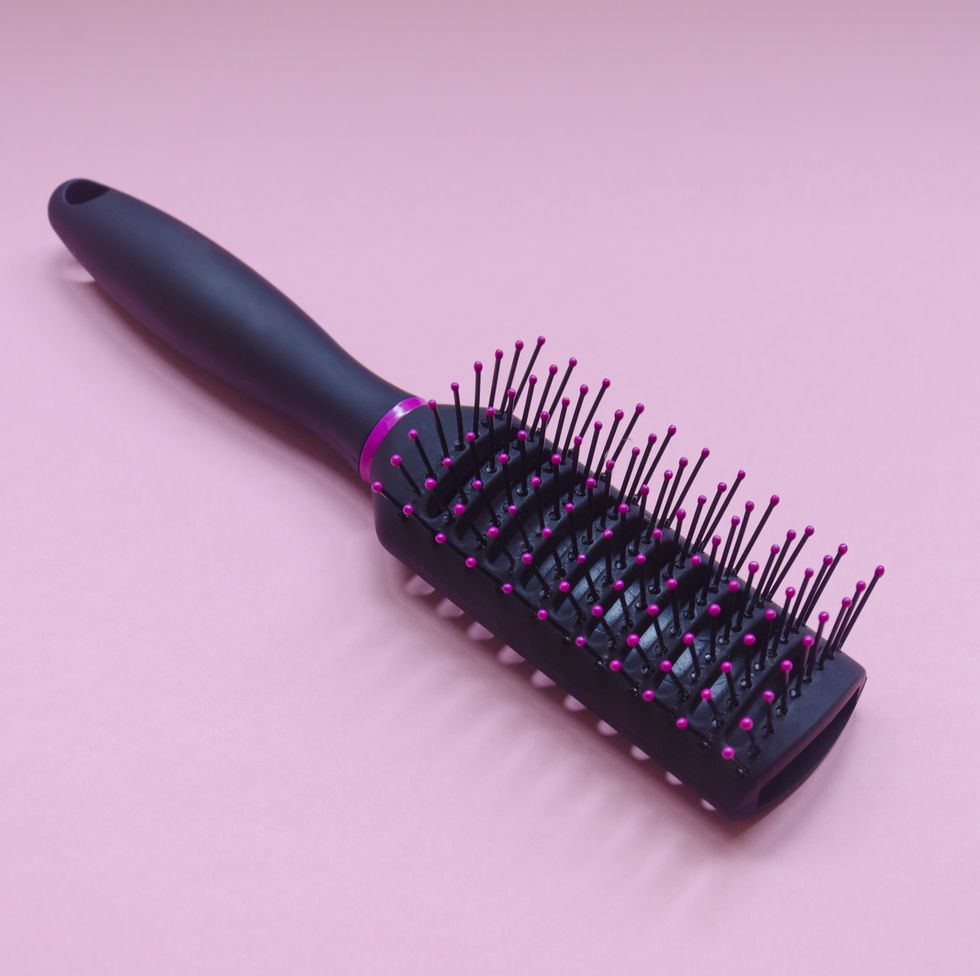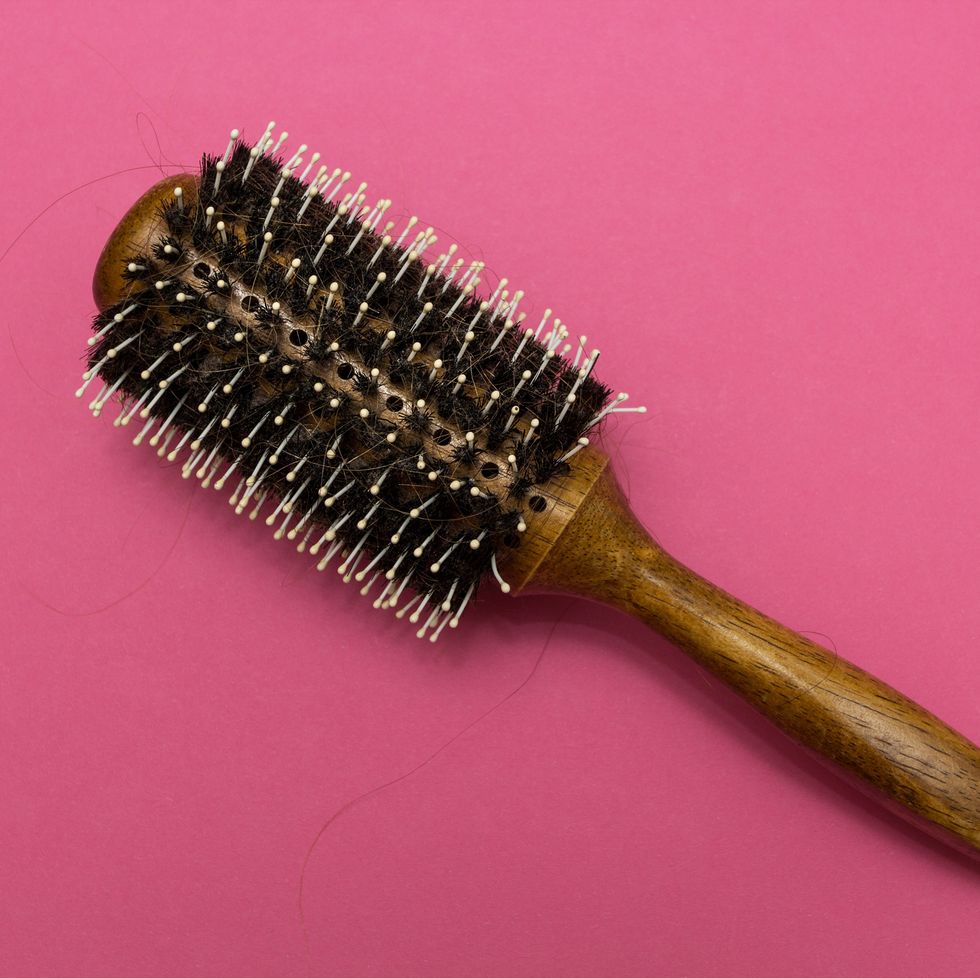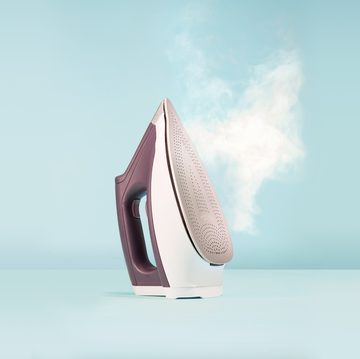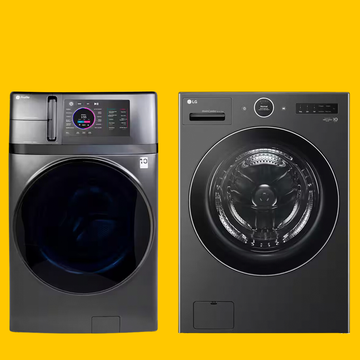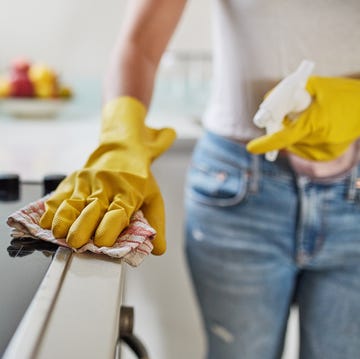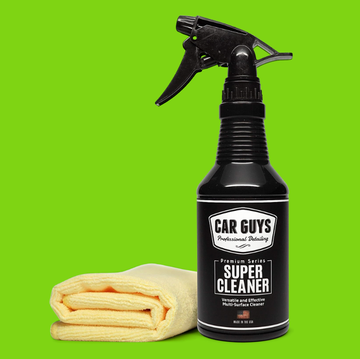You may not think about it much, but there’s a good chance you put a lot of time and effort into taking care of your hair. That includes everything from finding the right shampoo for your hair type to blow-drying to nourishing it with DIY hair masks. But do you put the same effort into cleaning your hairbrushes?
Though you've likely familiar with the importance of cleaning your makeup brushes, for some reason, it seems like the idea of cleaning your hairbrushes doesn’t get as much attention — but it should.
Why is it important to clean your hairbrush regularly?
"You clean your makeup brushes regularly to remove grime, and you should be doing this with your hairbrush too," says Anabel Kingsley, the brand president and consultant trichologist at Philip Kingsley. “Hairbrushes become coated in the hair products you use, as well as bacteria, environmental pollution, dust, sweat, oils and dead skin cells that are found on your hair and scalp. If you regularly use a dirty brush to comb or style your hair, you will be transferring dirt back onto your strands and scalp."
But keeping a hairbrush truly clean goes beyond simply removing the hair that builds up on it. Have you ever noticed what appears to be dusty gray lint or fuzz on your brush? "That can be actual dust from the environment, as well as dirt, old product residue, oils and dead skin cells found within your hair and on your scalp," Kingsley explains.
Every time you use a dirty brush, you’re redepositing that buildup back onto your strands and scalp, potentially making your hair look greasier. "The buildup on your hairbrush can serve as nidus for bacteria and yeast overgrowth, so there is an infection risk," warns Sejal Shah, M.D., a board-certified dermatologist at Smarter Skin Dermatology.
How often should you clean your hairbrush?
It’s best not to wait until it looks dirty or has visible hair and buildup on it. Generally, you should aim to clean your hairbrush every two to four weeks.
"However, it varies from person to person, depending on how much styling product you use, how often you use the hairbrush and how often you wash your hair," Kingsley says. For example, if you shampoo daily and are using a brush mainly on freshly washed, clean hair, you’ll need to wash it less than if you shampoo twice per week and are using your brush daily on dirtier hair.
How often should you replace your hairbrush?
It depends on your hairbrush. "If the bristles or prongs on your brush are snapping off, bent or damaged, or the body of your brush is flaking or cracking, it’s time to replace it," Kingsley says.
What you'll need to clean your hairbrush
Properly cleaning your brush requires just a few simple tools and products you likely already have on hand:
- Tail comb
- Shampoo
- Baking soda
- Toothbrush
- Hand towel
- Large bowl or a sink with a stopper
How to remove the hair from your brush
No matter what type of hairbrush you're cleaning, the first step is to remove the hair from your brush.
It’s best to remove hair stuck in your brush after every use. If you have a lot of old hair stuck in your detangling brush, for example, it could tangle with the hair attached to your scalp as you brush it and create extra tension, which could lead to damaged hair and affect how well the brush works, cautions Kingsley.
"Use the pointy end of a comb or your fingers to remove any strands of hair from your brush,” Kingsley says. “If you don’t own a pointy ended comb, try the pointy end of an eye makeup brush or chopsticks. I don’t recommend digging into your brush with tweezers or nail scissors, though, as these could scratch and damage your brush."
How to clean synthetic brushes
Follow these instructions to clean all types of brushes with synthetic bristles and handles, including plastic vent brushes and paddle brushes.
Step 1: Remove all the hair from your brush, as outlined above. "If there’s a lot of hair tangles within a rounded or barrel brush, you can try lifting it up and carefully cutting the hair with scissors to make removing the hair from the brush easier," Kingsley says.
Step 2: Mix your regular shampoo with warm water, or two tablespoons of baking soda with two cups of warm water, in a container or your sink.
Step 3: Submerge your brush and leave it to soak for 10 to 15 minutes.
Step 4: Using a soft, clean toothbrush, gently scrub between the prongs, being careful not to remove any of the brush's ceramic coating.
Step 5: Rinse well and shake out excess water.
Step 6: Leave your brush to dry completely on a hand towel or on your dish rack. This can take anywhere from 12 to 24 hours.
Take note: Paddle brushes with squishy bases are a bit trickier to clean properly, warns Birnur Aral, Ph.D., director of the Beauty, Health & Sustainability Lab at the Good Housekeeping Institute. "You can trap water underneath the base, which may be hard to get out," she says. The lingering moisture can result in unpleasant smells or worse, mold. Aral recommends consulting the manufacturer's care instructions or only washing these brushes every other month.
How to clean natural brushes
Cleaning a hairbrush with natural bristles and/or a wooden handle requires a slightly different approach.
Step 1: Remove all hair from your brush, as explained above.
Step 2: Mix a gentle shampoo with warm water, or two tablespoons of baking soda with two cups of warm water, in a container or your sink.
Step 3: Natural brushes should not be left to soak in water. Instead, quickly dip them (bristle side down) into warm, soapy water and remove right away. Take caution with wooden handles, too, since soap and water could affect the finish. Check the care instructions and refrain from intense scrubbing. "I wouldn't soak any brushes with wooden handles," advises Carolyn Forté, director of the Good Housekeeping Institute Cleaning Lab. "I'd recommend a quick swish instead."
Step 4: Using a soft, clean toothbrush, gently scrub between the prongs.
Step 5: Shake off excess water and leave your brush to dry completely on a hand towel or on your dish rack.

Caroline is a writer and editor with almost a decade of experience. From 2015 to 2019, she held various editorial positions at Good Housekeeping, including as health editor, covering nutrition, fitness, wellness, and other lifestyle news. She's a graduate of the Medill School of Journalism and dreams of the day Northwestern will go back to the Rose Bowl.
Celia Shatzman (she/her) is a Brooklyn-based writer and editor who has penned stories on topics ranging from beauty to fashion, travel, celebrities, health, entertainment, finance and more. A graduate of the Medill School of Journalism at Northwestern University, she is a beauty and style contributor at Forbes and her work has appeared in New York, Cosmopolitan, WWD, ELLE, Conde Nast Traveler, Afar, Travel + Leisure, Women’s Health, Marie Claire, Byrdie, Refinery29 and NYLON, among others.
